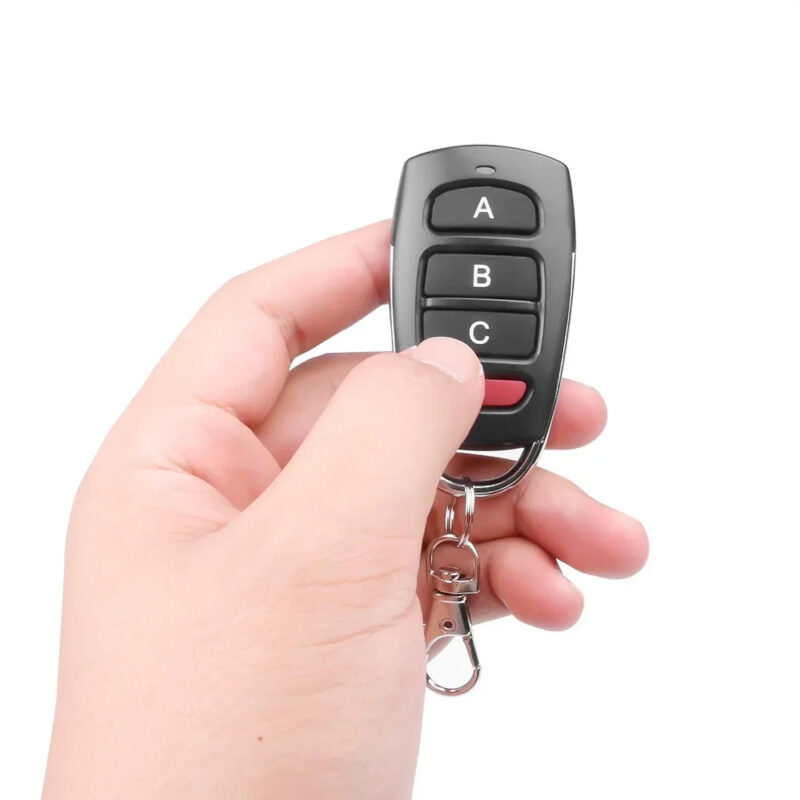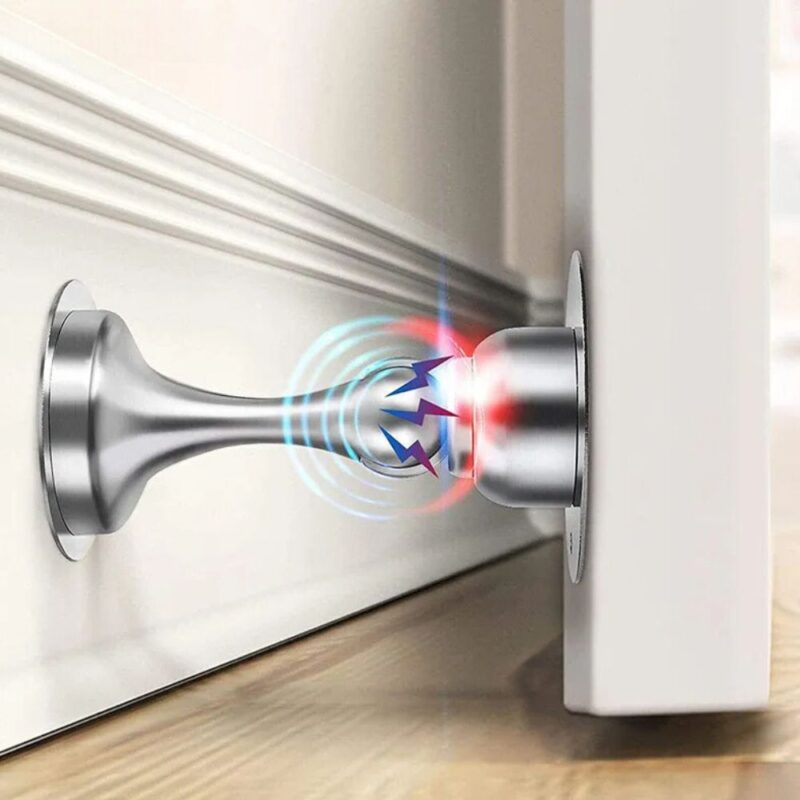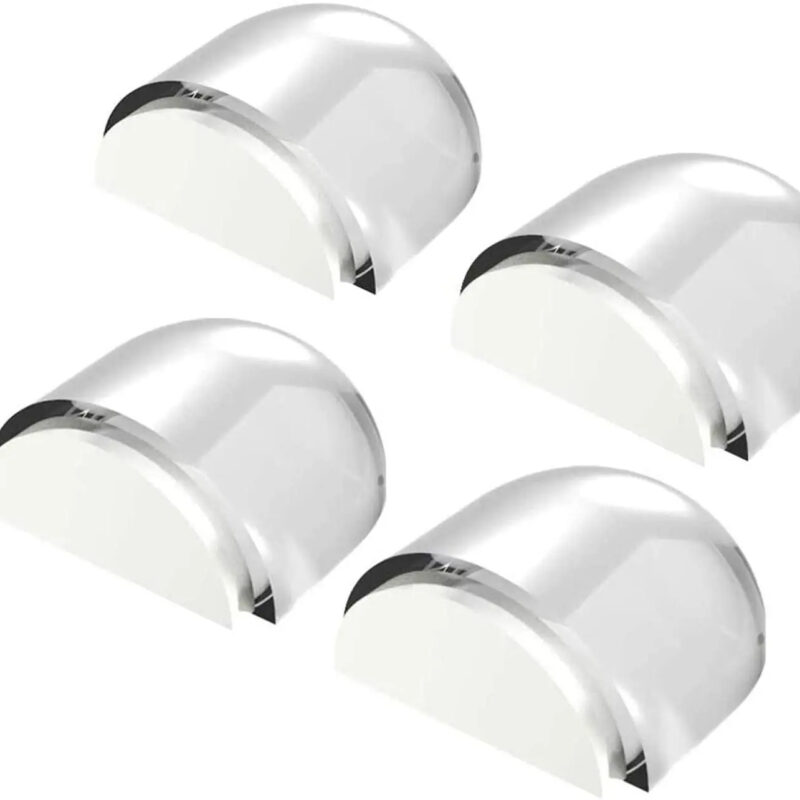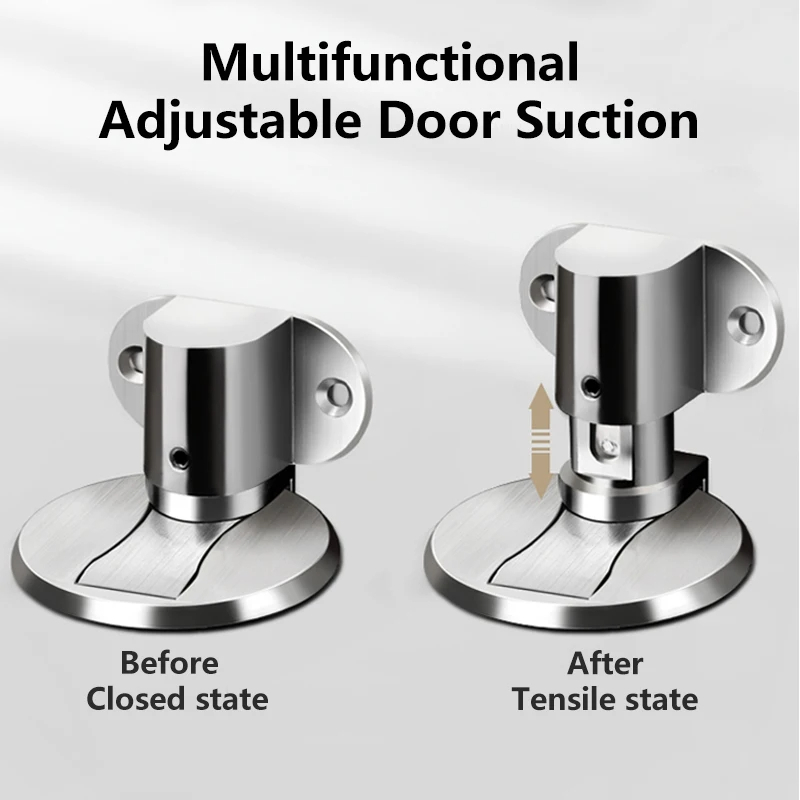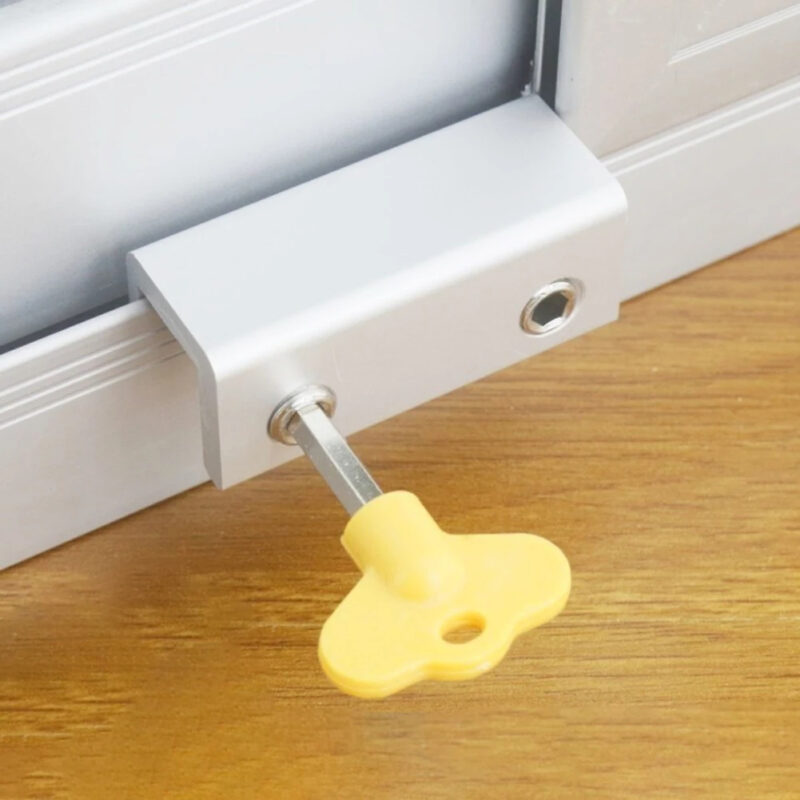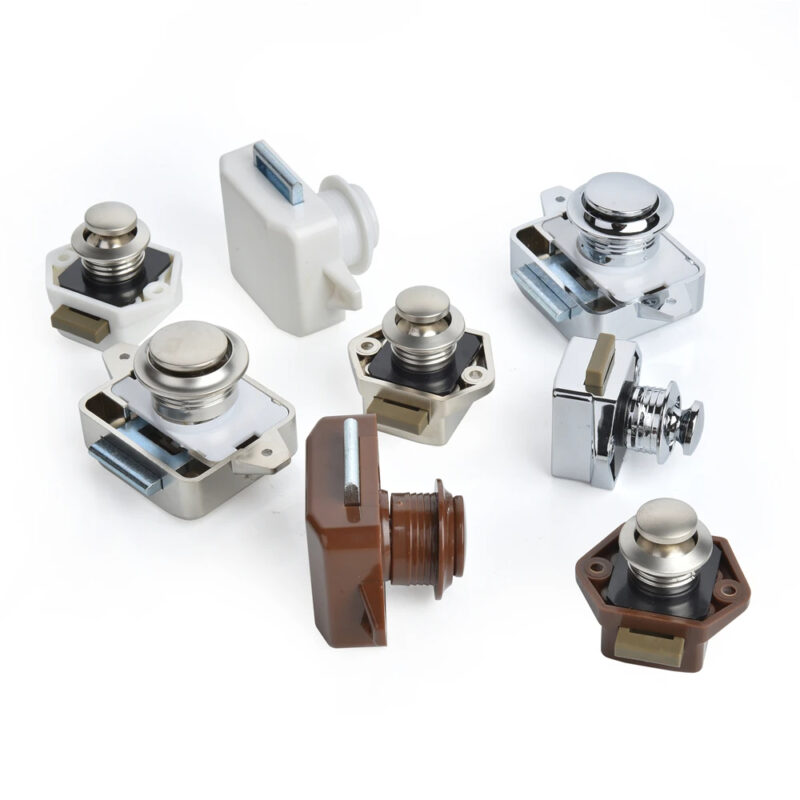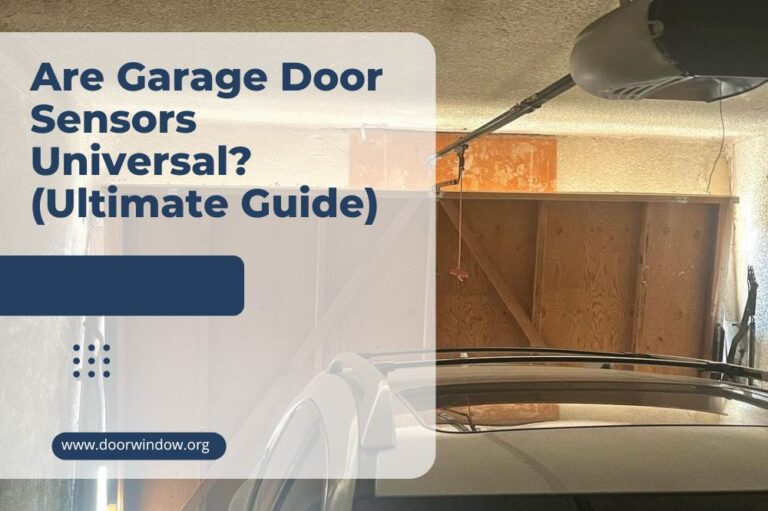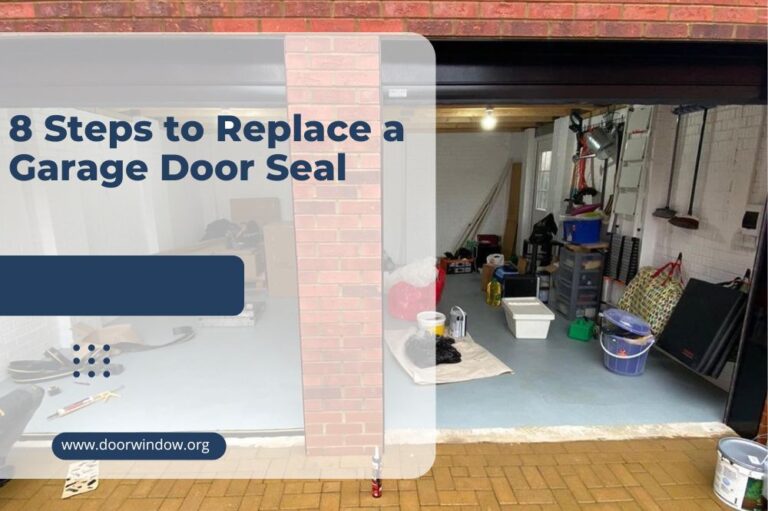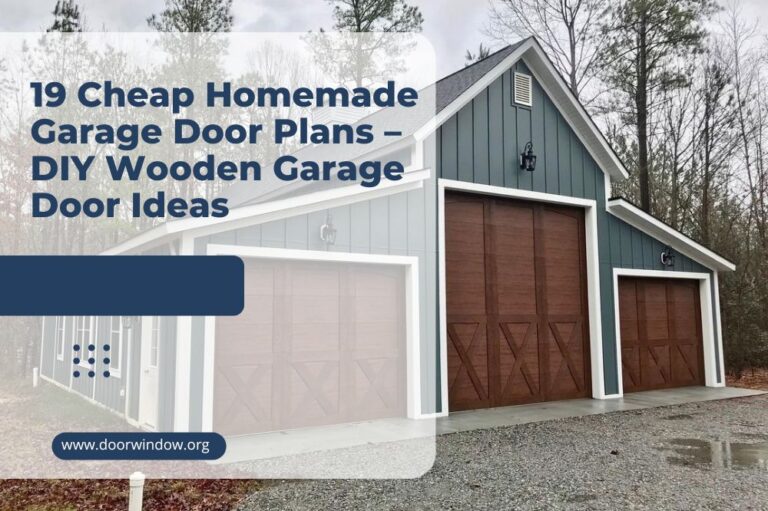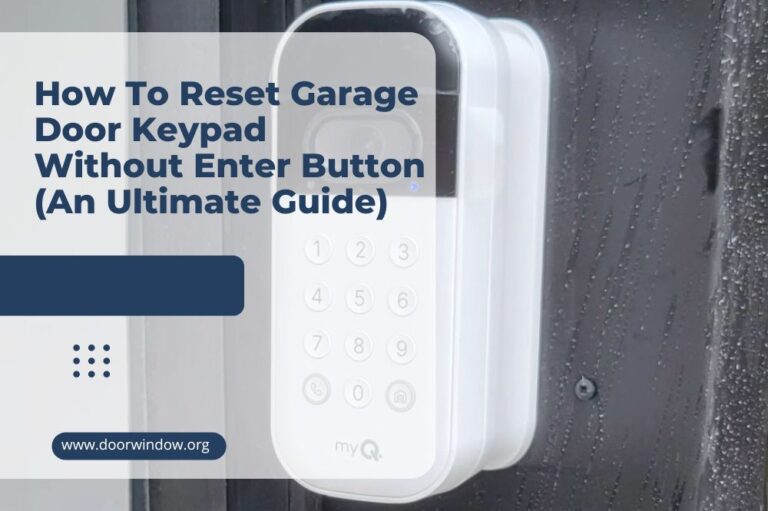Garage Door Torsion vs. Extension Spring (What Is The Difference)

Are you looking to buy a new garage door spring or replace a damaged one?
Most homeowners rarely think about their garage door spring. However, it’s an integral component of the garage door counterbalance system and enables a smooth operation.
When it comes to garage doors, two distinct types of springs are commonly used–torsion springs and extension springs. While both serve the same function of making it easier to open and close the garage door, they operate differently.
In this article, we will teach you about torsion springs and extension springs, highlighting their differences to help you make an informed decision.
Garage Door Torsion vs. Extension Spring
Torsion Spring
Torsion springs are perhaps the most popular type of garage door springs today. They are mechanical devices usually mounted on a metal rod above the garage door. The springs comprise a wire or cable wrapped around a drum and often assume a long narrow body.
A torsion spring works through twisting and untwisting. When twisted, it creates torsion or torque, which helps in raising and lowering the door, hence the name.
When the door is open, the spring stores energy in its coil. Later it releases this energy, helping to counterbalance the garage door weight.
The strength of this type of spring depends on its material, cable size, and the number of coils. Most torsion springs are made using durable steel and can withstand wear and tear.
But over time, they can wear and break. Therefore, it’s crucial to have them inspected and replaced by an expert if necessary.
Remember, torsion springs are under a lot of tension. It’s risky to repair or replace because it can cause serious injury. So, if you believe your torsion spring is damaged, it’s wise to hire a professional.
Extension Springs
An extension spring is an older version of garage door springs and it’s common in most traditional and even modern homes. It comprises a strong wire that coils around a central axis and has two ends that attach to other parts, like cables, hinges, and spring mounting brackets. When stretched or compressed, it generates tension and stores energy in the coils.
Extension springs are installed on each side of the garage door and connect to a pulley system that runs along the garage wall and connects to cables. The end of the spring could be a single loop, double loop, clip, or hook.
When the garage door closes, the spring coils stretch twice their coiled length. But when you open the door, the spring contracts, releasing the stored energy to help lift the weight of the door.
Extension springs work more like a traditional mattress spring. On the other hand, a torsion spring shares the same mechanism as a mouse trap spring.
However, extension springs are not manufactured in bulk anymore because they are difficult to set up. Furthermore, they are susceptible to wear and tear, which can cause the spring to detach from the cable, leading to serious damage.
Garage Door Torsion vs. Extension Spring: Comparison
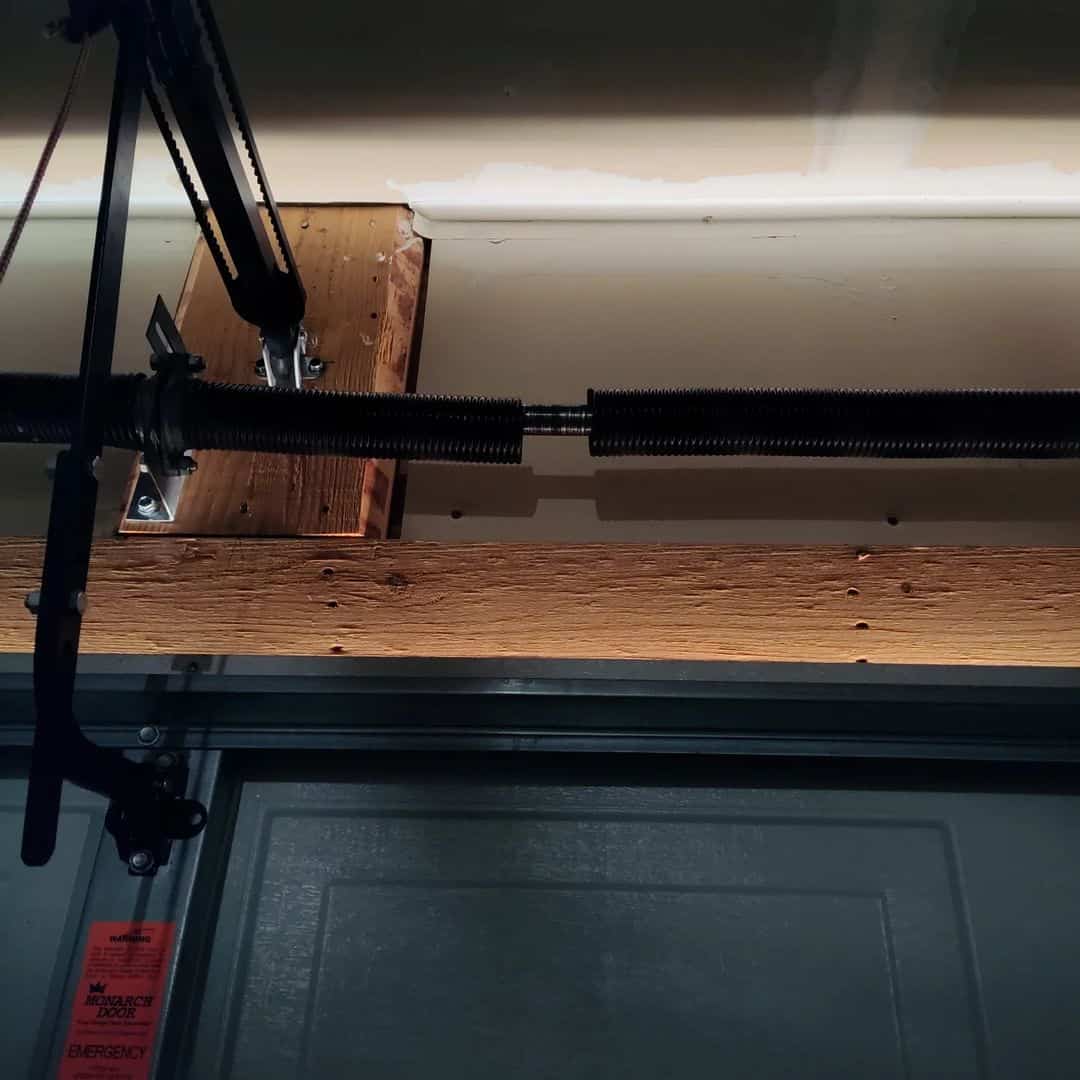
In this section, we have highlighted the main differences between torsion and extension springs.
1. Location and Appearance
Regarding location, torsion springs are located directly above the garage door’s opening. You can’t observe the movement of these springs since a metal cover protects them. However, you can tell that you’re dealing with a torsion spring if the end of the spring features metal pieces called cones.
As for extension springs, they are usually mounted on the sides of the garage door. If you watch closely, you will see the extension spring extending as the garage door opens. Extension springs end in a loop.
2. Life Span
Most garage door springs can last up to 10,000 cycles. That means if you open and close your garage door up to four times a day, the springs will last up to 6.8 years. However, the lifespan varies with the type of spring.
For instance, torsion springs can last for 15,000 to 20,000 door-lift-close cycles because they are durable. Garage door extension springs last only 7,000 to 10,000 cycles. As such, you might have to replace the extension spring more often than the torsion springs.
3. Cost
Besides lifespan, torsion and extension springs differ in their cost. Torsion springs cost more than extension springs because they are more complex. They require more technical expertise to manufacture and install. Also, they last longer than extension springs, which makes them cost-effective in the long run.
In addition, when a torsion spring breaks, it’s expensive to repair or replace it. As said earlier, these springs pack a lot of tension. That means only professionals can work on it when it’s damaged.
Extension springs are less expensive to replace. But they have a shorter lifespan and are highly susceptible to breaking.
Keep in mind, the overall cost of repairing or replacing a garage door spring varies based on the type of spring, the size of the spring, and the location of your garage.
4. Uses and Performance
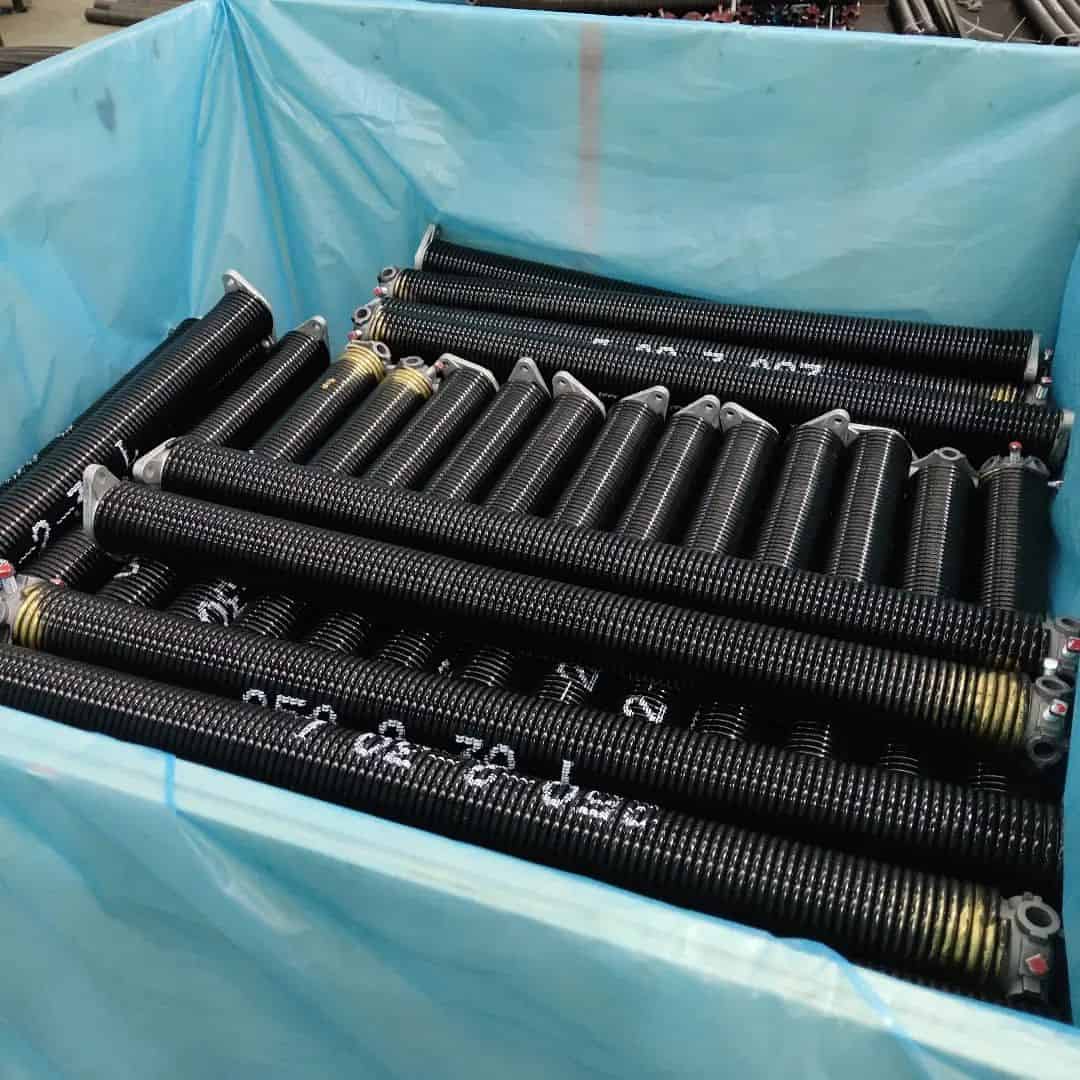
While torsion springs and extension springs provide a proper balance for the garage door weight, they operate differently. We might have mentioned this above, but let’s break down how these springs work exactly.
- Torsion springs
They depend on torque or rotary force, which is generated through a twisting action. The end of these helical springs is attached to other parts of your garage door. Torsion springs are installed on top of the garage door on a shaft or metal tube. The tube features cable drums on each end, allowing a cable to run from the bottom corner of the garage door to the drums placed on the sides of the door. The spring winds and unwinds when the garage door opens and closes, keeping a steady and controlled motion. As a result, the garage door remains in proper balance.
- Extension springs
They are connected to the garage counterbalance assembly at both ends through a cable. When the door opens, the spring retracts, pulling the cable that counters the load (door’s weight). As the door closes, the springs extend, storing built-up energy in the coils and releasing the door. Unlike torsion springs, extension springs can cause a jerking motion. This is where the door opens much faster when the buildup tension is gone. This motion often results in wear and tear or even damage to other garage door hardware.
5. Maintenance
Garage door spring maintenance is as essential as any other garage door repair. Both torsion springs and extension springs require seasonal maintenance to ensure they are functioning properly. Maintenance generally involves checking for signs of wear and tear, like cracks and rust. It also includes lubricating the springs to boost their lifespan.
Torsion springs require less maintenance because they comprise a few components. You will only need to lubricate the metal shaft above the door to prevent rusting and adjust/align the springs to ensure they offer the right amount of tension.
Extension springs come with several components prone to wear and damage. That means they require slightly more maintenance. They may require frequent lubrication because they are under a lot of tension.
Overall, garage door springs need some level of maintenance to remain in good working condition. It’s wise to adhere to the spring’s manual to ensure your spring last long as possible and enjoys smooth operation.
6. Space
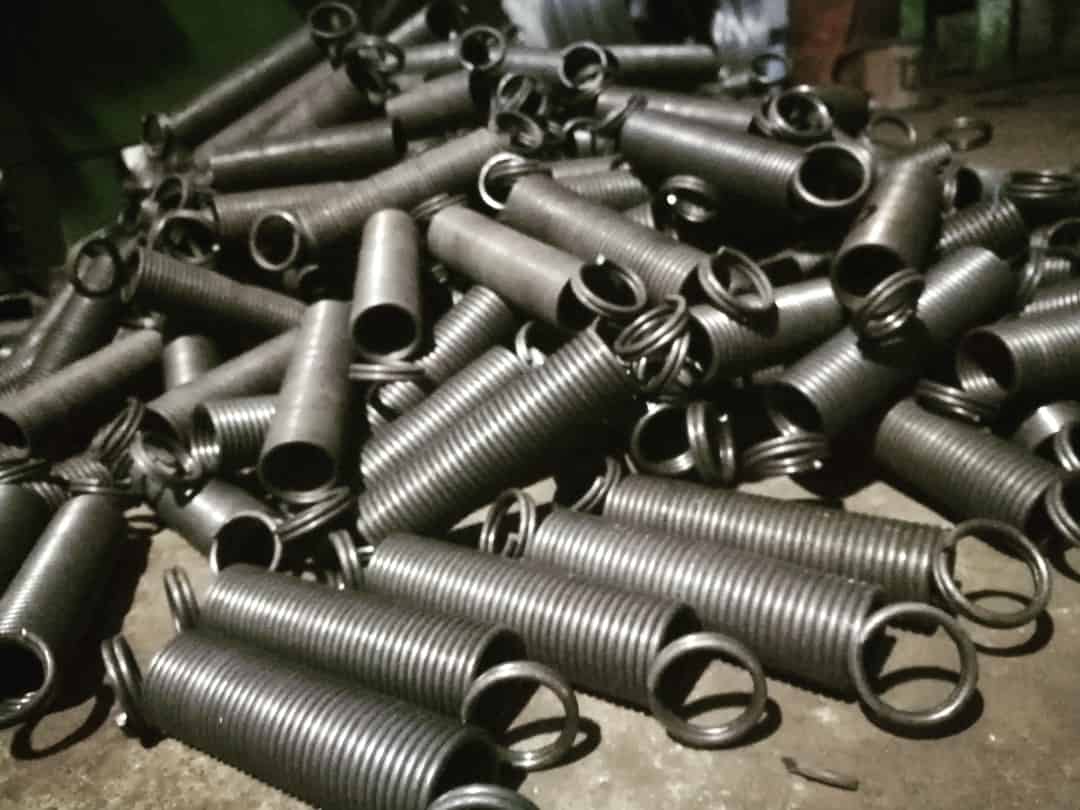
Since torsion springs are mounted above the door on a metal rod, they don’t consume a lot of space. Extension springs take up space on the side of the door. This can affect how you park your vehicles or perform other activities in the garage.
Homeowners with limited garage space or desire to park their vehicle close to the door will enjoy using torsion springs.
7. Safety
Garage door springs are usually under a lot of tension and require careful handling. Torsion springs stand out because they are safe than extension springs.
Most components of the garage door spring are contained in a metal tube. Because of this, you won’t have to deal with flying metal fragments when it breaks.
An extension spring is not housed within a protective cover and is connected to the garage door via cables and hooks. If it breaks due to constant stretching and compressing, metal projectiles can fly and cause serious injuries to those around the vicinity.
This explains why DIY repair or replacements are not recommended for extension springs unless you’re an expert.
Bottom Line
In conclusion, torsion springs provide lifting power for garage doors and are more suited for heavy or large doors. Although they are expensive, you will save more money in the long run since they last longer and require less maintenance.
Extension springs offer better balance and support and are a good choice for smaller or lighter doors. They cost less than torsion springs but require regular maintenance and are prone to wear and damage.
Ultimately, the best spring for your garage door boils down to your budget and garage size.
We hope you’ve found this article helpful! Do you have any questions or require further clarification on something, let us know by leaving a comment.

